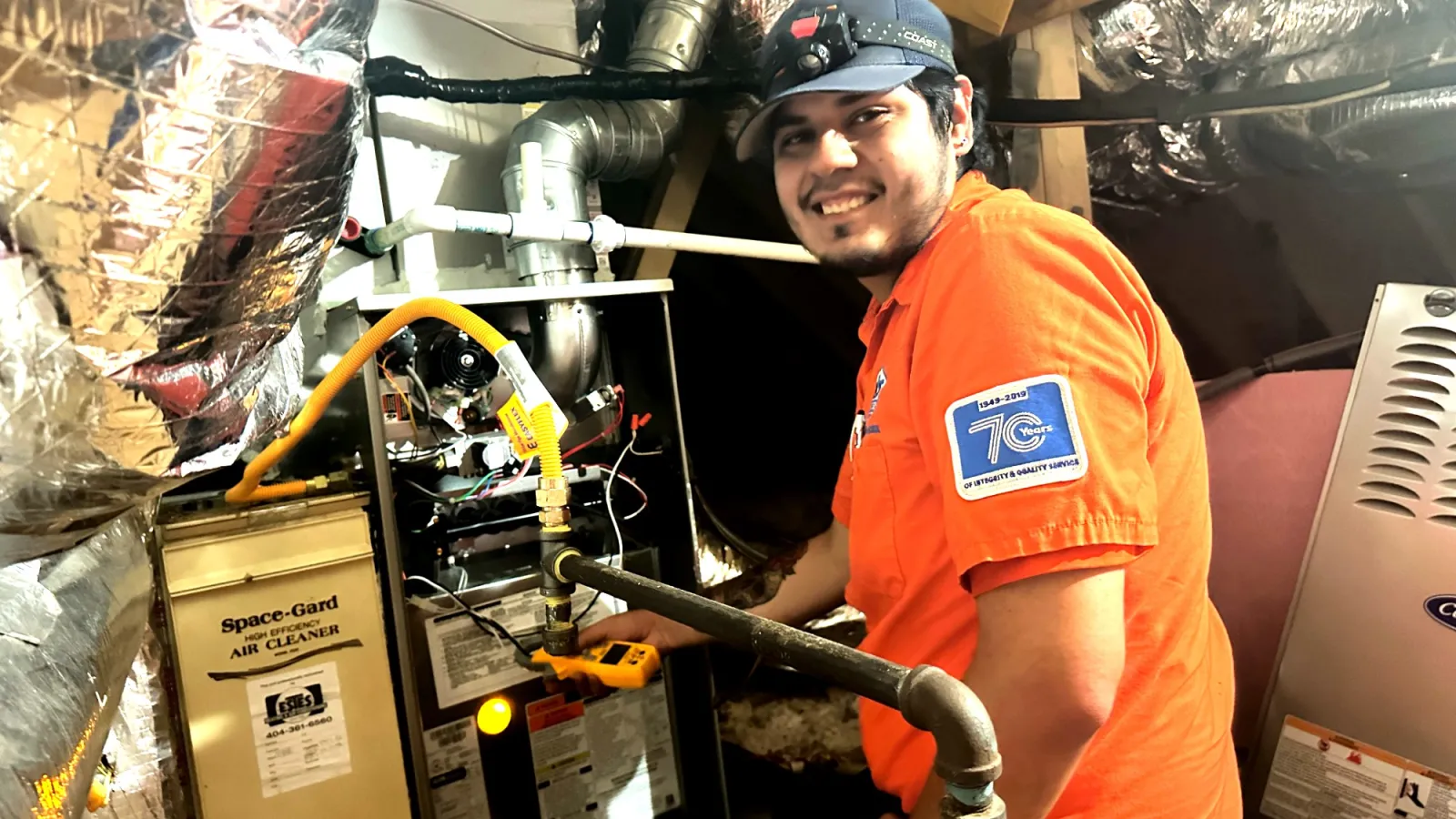Are you experiencing high humidity levels in your home? Has this humidity impacted both your comfort and wallet? The effects of humidity on HVAC performance should not be overlooked.
In fact, when you have high humidity in your home, your central air conditioner works longer and harder to maintain proper cooling. A warm and muggy house with higher energy bills is not comfortable nor ideal. In fact, it should be solved.
That's why, in this article, we will discuss the common reasons why humidity may be affecting the cooling performance of your air-conditioner.
Effects of Humidity and Why it Occurs
According to the U.S. EPA, the recommended humidity level in your home should be between 30 to 50% to maintain a comfortable and safe living environment. If it is higher than this, you can experience many different issues, such as mold, mildew, and even insects.
There are several common reasons that may explain why your air conditioner unit fails to remove humidity, including:
Faulty parts;
Aging system; and/or
Poor maintenance.
Getting to the root cause of an underperforming system requires investigating where the problem arises.
First, your central air conditioning unit's job is to replace the warm air inside your building and replace it with cool, chilled air in the warm months. Inside your unit houses a condensing and evaporator coil. Both work in conjunction to remove warm air by condensing it into a liquid and draining the water moisture outside.
However, there are occasions when the weather and humidity outside exceed the unit's ability to keep your home comfortable. This includes older or oversize units, worn-out parts, and leaking ductwork, to name a few. More details on the causes are addressed in the next section.
Some of the first signs that your home is experiencing higher humidity despite running the AC include the following:
Visible condensation on windows, doors, mirrors, pipes, and walls.
Moist or discoloration on surfaces such as countertops and furniture.
Musty, moldy, or smoky smells inside the home.
Proper sizing, specification, and fan speed help reduce humidity at peak humidity levels, which we will discuss in the following section.
Causes of High Humidity with Air Conditioning
There are a few common causes to know about when experiencing high humidity in the home while running AC. Consider the following reasons why your unit struggles to control your home's humidity level:.
Single Fan Speed
If your unit has only single fan speed functionality, consider a unit with variable fan speed functionality. Variable speed systems can more effectively remove the humidity in your home versus a single fan.
A significant shortcoming of a single fan speed unit is its inability to shift to slower fan speeds. As a result, once your control system has reached the necessary temperatures in your home, the fan shuts off.
On the other hand, variable fan speed units allow fans to gradually draw out humidity found in the air throughout your home. This is because it can run at lower speeds for more extended periods of time.
When considering single and variable fan speeds, consider the main difference of a new unit's fan speed functionality: single fan speed units respond to temperature, whereas variable fan speed units respond to humidity.
Next, we will consider a common mistake homeowners make: selecting an oversized system for your home, which can contribute to unstable humidity levels in the summer.
Oversized Unit
Having an oversized unit will perform poorly at regulating temperature and humidity inside your home in the summer. Due to its stronger cooling capacity, larger units have more robust components, including the compressor.
The compressor will activate and deactivate more frequently, resulting in the system not running long enough to remove the necessary moisture from the air.
If you think you have an oversized unit installed at your home, you may need to consider an AC replacement and work with a trusted Atlanta HVAC company that can size the right unit with a smaller capacity for your home. We will now discuss another common problem that contributes to a humid home: faulty ductwork.
Faulty Ductwork

Did you know a typical house loses 20 to 30 percent of the air cooled by AC due to leaks, cracks, and poorly connected ducts? A telltale sign of poorly performing ductwork includes being able to isolate humid rooms or zones throughout your home.
Additionally, you can identify whether your home has poorly performing ducts by considering the following factors:
higher than normal energy bills;
rooms are stuffy and never comfortable; and/or
ducts are located in the attic, underneath the home in a crawlspace, or in the garage.
Cooling with faulty ductwork is essentially cooling the outdoors and often is overlooked by prolonged lack of maintenance, which leads us to our next point:
Lack of Proper Maintenance
Of course, components wear out throughout their operating life. However, without routine preventative maintenance, it decreases the lifespan of some main components. Reactive repairs can only go on for so long before it becomes inefficient for the comfort of your home. Indeed, a poorly maintained system can have trouble properly controlling the humidity levels in your home.
That's why you should consider enrolling in a maintenance membership program like we have at Estes Services. Proper AC services with a trustworthy and reputable company is one of the most effective ways to prevent high humidity in the future.
How to Solve a Humidity Issue Now
If you have higher humidity levels than usual, the air conditioning repair and installation experts at Estes Services can help ensure your air conditioner is good condition and at optimal performance.
Solve the high humidity issues at your home with Estes Services. We can recommend the right solution, whether it's a dehumidifier installation, a maintenance membership, or a new AC installation. If you are experiencing stuffy rooms, musty smells, and/or higher energy bills, don't wait. Schedule service with us today. It's that Easy; It's Estes!

